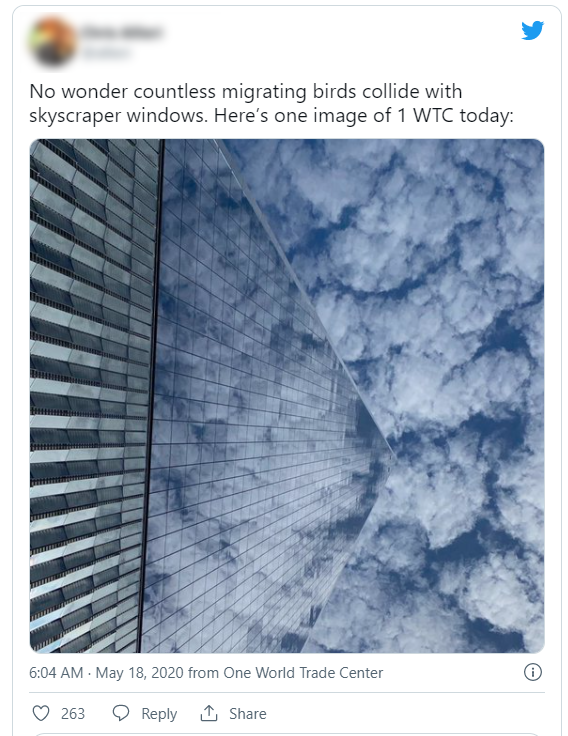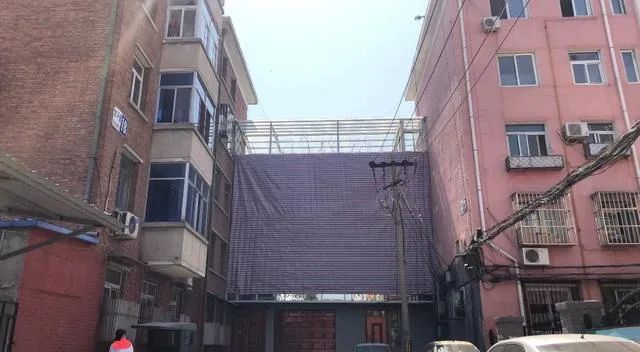About 750 million birds die each year as a result of flying into glass walls, which are difficult to distinguish from the sky, US Fish and Wildlife Service estimated. When we are building glass façade, what can we do to save birds?

Beijing sub-centre library, the 16m-high glass curtain wall enclosure provides excellent light and views of the interior
The newly built, Beijing Sub-Center Library is expected to complete at the end of 2022. The building concept is described as “creating an informal zone and the notion of sitting under a tree reading your favorite book”. Snøhetta explains in the project description the advantages of using large areas of glass facades for public buildings,” Let the indoor various public activities at a glance, attract the public outside to this expansive space”.
However, the building appeals to many disapproved voices, on one hand, it is about the exaggerating glass façade which does not align with the low carbon emission goal in China. A façade with over 30-40% glass dramatically increases energy use for heating and cooling. On the other hand, Except for the unknown huge maintenance cost and energy consumption of the projects, the glass façade is a fatal attraction to birds, because birds collide with the buildings especially glass-covered or illuminated skyscrapers.
Why do birds hit the glass?
It is so ironic that the sub-centre library aims to become a future library that is environmentally friendly and highly sustainable. This is a common blunder in the recently built constructions in China. They all have a grand aim and deep down into the purpose which is linked with commercial interest. More and more buildings chase for a publicity gimmick and sometimes the builders just ignore more possibilities that the buildings can give to the nearby surroundings and the co-living creatures. At least, buildings shall not harm the environment and try to minimize the bad influence.
Buildings with glass façades are the invisible killers to birds.
In China, there is yet no data or estimation about the death of birds, but according to a report from the US, buildings are killing up to 1bn birds a year in the US, scientists estimate.
1. Refection creates an illusion.
Reflections on glass or highly polished surfaces are a significant source of bird mortality. Birds cannot tell the world reflected on the high polished glass or materials on the buildings. They just want to fly through, and “bang”, they fell down.

Glass is invisible to both birds and humans. Humans learn to see glass through a combination of experience and visual cues like mullions and even dirt, but birds are unable to use these signals. Aspects of bird vision contribute to the problem. Unlike humans, most birds’ eyes are placed on the sides of their heads. Birds thus have little perception of their vision ahead. Besides, birds have poor contrast sensitivity compared to humans: shapes at a distance merge into a blur at the closer range for birds.

Just simply imagine, if you are a bird, you cannot see the things confronting you, and when you get close to the glass, your side vision only conveys a blur blue sky (which is not actually) to your brain. Glass is not nice to you!
2. Lights disturb birds migrating at night.
Most birds fly in the daytime, but many migrate at night. Research shows that artificial might lighting disrupts birds’ “navigation system” and can deviate from their flight paths. To escape the mist or cloud, birds might fly lower. There is some recent evidence that electromagnetic radiation outside the visible spectrum may also disorient birds. The indoor lights through the glass façade at night might cause great trouble to birds. The continuous light radiation 24 hours can lead to overwork and disorientate at night, causing them to crash into buildings.
3. When glass appears black, birds might want to fly in.
Birds often fly through small gaps, such as spaces between leaves or branches, into nest cavities, or through other small openings that they encounter. In some light, the space behind glass can appear black, creating the appearance of just such a cavity or “passage” with unobstructed access through which birds try to fly.
A concrete city is a death maze to birds.
On September 15, 2021, volunteers found more than 226 bird carcasses on the sidewalk at the foot of the twin towers 3WTC and 4WTC of the World Trade Center. The same tragedies are happening every day in cities.

There are 8 migratory bird migration routes in the world, 3 of which pass through China. The species and quantity of migratory birds passing through China every year account for about 20%-25% of the migratory birds.

Both the central and western migration routes pass through the Sichuan Basin. Migratory birds breed in the eastern and central grasslands of Inner Mongolia, western North China, and will enter the Sichuan Basin in autumn to overwinter or continue to travel to central or southern China or farther.

A concrete forest, Shanghai

China has a large range of urban area which concentrates in southeastern part.
Experts estimated that according to China’s population and building density, bird strike death in China should be more serious than that in America.
Birds face threats during their migration. Surviving from illegal hunting and habitat loss, they enter the urban areas with many high-rise buildings, crises lurking in cities make it harder for them to make them through winter.

Chinese resident found a dead bird hit the glass window.
Problem: Glass
It is a bad decision that the transparent glass façade is designed with the forest concept, for birds are often misled by the reflection of the surroundings on the glass.
It is not the higher buildings are, the more possible it is for bird-building collision. According to Li Binbin, a Chinese expert found from his study, "82.1% (bird-building collision) occurred in buildings with lower than 6 stories, 9 times over than that of high-rise buildings", "74.4% occurred in buildings surrounded by trees". Li said, “The bird-building collision is mainly related to glass facades coverage, the surrounding environment and the reflection, etc.”
Li’s survey found that the proportion of glass area does a lot with bird collision. Based on his survey, bird collisions did not occur in buildings with 0-20% glass coverage, but when the glass coverage is over 40% of the building façade, bird collisions will increase as the percentage rises. In a word, the more glass, the more bird deaths. The study also pointed out that artificial light can also disorient and attract birds not only in the daytime but also at night.
Solutions: Glass
Just as Li said, things humans find beauty in are not all friendly to birds.
More buildings adopt glass as the major structural material to attain the transparent, crystal-like effect. To find a happy medium, it is possible to design buildings that can reasonably be expected to kill few or no birds.
Generally, there are three categories to make the building design more bird-friendly.
1. Using minimal glass

Bronx Call Center, the metal cube
2. Placing glass behind some type of screening. (Netting, Screens, Grilles, Shutters, Exterior Shades)

de Young Museum
3. Using glass with inherent properties that reduce collisions
Patterns on Glass

Duke Kunshan University has affixed dot stickers to the glass of its teaching buildings to prevent bird collision.
Actions matter
The huge building is not the only one that should change, as we mentioned above, many bird collisions happened in short buildings.
In April 2020, a community in Beijing reported that the glass curtain wall of a self-built house had caused birds to strike and die. After receiving the report, the owner immediately covered the building facade to prevent more accidents.


To residents, there are some easy ways to help to build a friendly world for birds. For example, use indoor shading devices during the daytime and turn off unnecessary indoor lights at night; do not place a lot of plants near windows; stick patterns on the inside of windows, etc.
